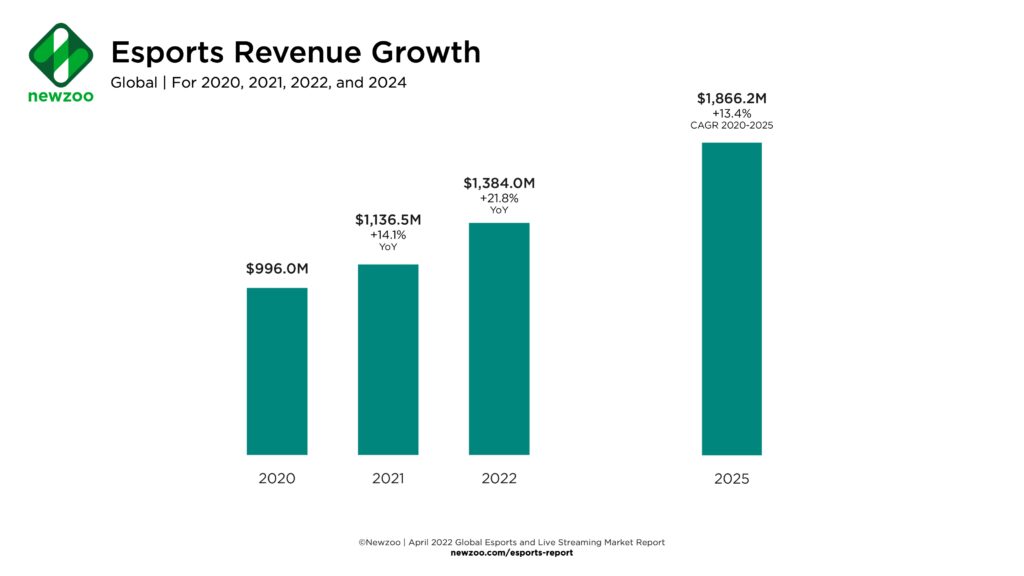Esports, defined as competitive gaming, has become a significant industry which is expected to generate $1.5bn in revenue by 2020, up from $655m in 2017. A rise in the number of gamers, increased access to gaming – supported by social media platforms like Twitch and YouTube – and professionalisation have all contributed to the sector’s growth. The popularity of esports among the young has led to an increase in demand for professional gamers, and for experts in game development, software engineering and graphic design. However, the industry faces challenges such as regulation and the absence of sport recognition, which stalls its growth.
The Rise of Esports: An Analysis of the Competitive Gaming Industry
Introduction
The gaming industry has come a long way since its inception in the early 1970s. The gaming industry has seen an exponential rise in the last decade. One of the most significant growths in this industry has come from esports. Esports refer to electronic sports where gamers compete against each other in a professional setting. Esports have taken the world by storm, and it is expected to grow exponentially in the coming years. This article is an analysis of the competitive gaming industry and the rise of esports.
Growth of Esports Industry
Esports has come a long way since its inception in the 1970s. Initially, esports were considered a niche market catering to a small community of gamers. However, the industry has seen an exponential rise in recent years. According to Newzoo, a leading research firm, esports generated $655 million in revenue in 2017, and it is expected to grow to $1.5 billion by 2020. This growth can be attributed to several factors.
One of the primary reasons for the growth of esports is the increase in the number of gamers. As technology has advanced, more people have access to games, and the gaming industry has become more inclusive. The rise of social media platforms has also contributed to the growth of esports. Social media platforms like Twitch and YouTube have made it possible for gamers to share their gameplay with a global audience, making esports more accessible.
The Professionalization of Esports
The professionalization of esports has been a significant factor in its growth. Esports have moved from being a hobby to a professional sport. Major brands and companies have recognized the potential of esports and have invested in it. Major brands such as Coca-Cola, Red Bull, and Intel have sponsored esports tournaments, and professional esports teams have sponsorships from companies like Nike and Adidas.
With the professionalization of esports, the average player’s earnings have also increased. Professional esports players can earn anywhere from a few thousand dollars to millions of dollars in prize money. The largest esports tournament, The International, had a prize pool of $34 million in 2019.
Popularity of Esports among the Youth
Esports is a significant hit among the youth. According to a study conducted by Newzoo, 40% of esports enthusiasts are between the ages of 21-35, and 22% are under the age of 21. Esports has also become a part of school and college curriculums worldwide. Several universities and colleges have started offering degrees in esports.
The popularity of esports has led to the development of a new industry. Game developers, software engineers, and graphic designers are among the professionals who are in demand. Esports has also led to an increase in the development of esports arenas, which have become a craze among gamers.
Challenges Faced by Esports
Esports is a nascent industry, and it does face several challenges. One of the primary challenges is that it is yet to receive recognition as a sport. Despite its massive popularity, esports does not have the same recognition that traditional sports like football or basketball have. This lack of recognition has led to a lack of funding by the government and the absence of visas for international esports players.
Another challenge that esports faces is the lack of regulation. There is no standard regulation for the industry, making it challenging to determine legitimacy. The absence of regulation also creates opportunities for fraud and match-fixing.
Conclusion
Esports has become a significant industry, and it is expected to grow even more significant in the coming years. The growth of esports can be attributed to several factors, including an increase in the number of gamers, the professionalization of the sport, and its popularity among the youth. While esports does face several challenges, it has an enormous potential for growth. As the industry matures, it is expected to overcome these challenges with the support of the gaming community, the government, and the private sector.
